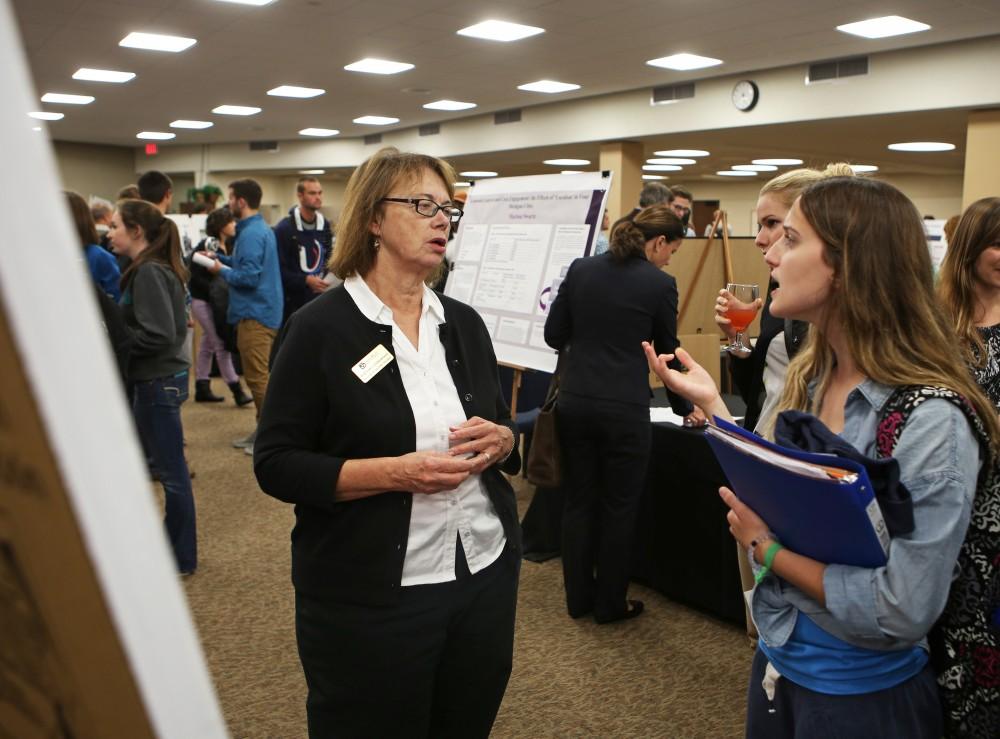How to network

GVL/Kevin Sielaff Kathleen Underwood (left) and Ashley Rapp)
Feb 2, 2015
In the 21st century, the adage “It’s not what you know, it’s who you know” seems to be holding up.
In the age of social media, being connected to peers, friends and family is fun and convenient. But students at Grand Valley State University have another task entirely in navigating the Web and the actual world: building professional networks.
The concept of professional networking may seem like a tedious sideshow to social media life and busy weekly schedules. But for the career-bound college student, networking is important. At GVSU, resources are all around and the steps are easy.
“Students should start by exercising networks they already have that they probably aren’t thinking of,” said Lisa Knapp, an assistant director at the GVSU Career Center.
She said most students are already surrounded by a set of professionals before they attend college or begin pursuing their majors and should explore those existing circles of people.
The next step is to build connections with faculty on campus.
“Make them know who you are,” said Suzeanne Benet, chair of the Seidman Marketing department. “These people are here to help you succeed.”
Students are often reluctant to approach faculty, Benet added, but faculty won’t prove as helpful to students “if they don’t know who you are.”
Another important step toward building a professional network is to attend events such as the upcoming GVSU Winter Career Fair on Feb. 24 or the Student to Professional Conference on March 20.
Knapp said that it’s a good idea for students to attend these types of events even if they’re not aimed at your major or particular interest.
“It’s big, it’s loud, it’s overwhelming,” she said about the Career Fair, adding that students should jump at that challenge.
Students who don’t attend miss the opportunity to take the little steps, like practicing introducing themselves, she said.
There’s one last piece that ties the networking process all together and makes the network work: LinkedIn.
“Don’t undervalue the power of LinkedIn,” Benet said.
She said LinkedIn, the quintessential professional networking site, is not an equivalent or substitute to Facebook or social media but is a more central kind of tool.
Knapp agrees that LinkedIn is crucial. She said it is useful even for students who have not established a network just yet.
“First and second year students can use it from the research end,” she said.
LinkedIn is perhaps the pinnacle of the networking world, but Knapp said that social networks and personal websites are useful, too.
Another recommendation Benet had for students was to clean up their online presence across social media.
Students may feel some trepidation stepping into the world networking, but Knapp insists that networking is just connecting – nothing sinister, nothing scary.
“Networking is building sincere relationships and getting information,” she said. “Armed with that information, you can do that reaching out.”
To learn more about career opportunities, visit www.gvsu.edu/careers/.

























